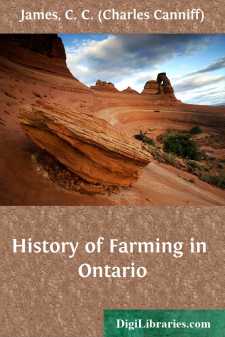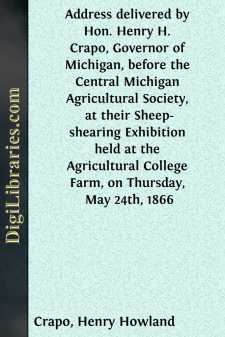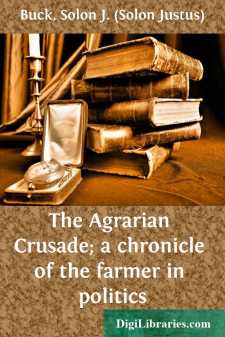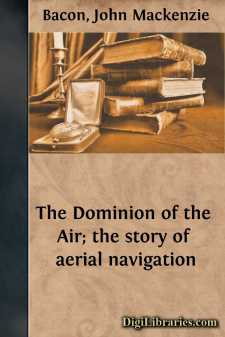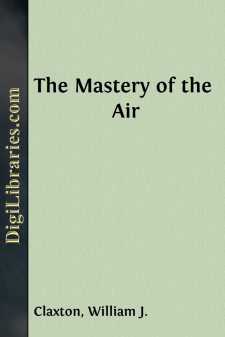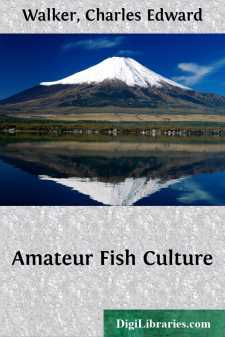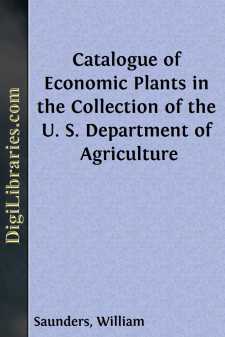Technology & Engineering
Technology & Engineering Books
Sort by:
HISTORY OF FARMINGThe Land and the People From the most southern point of Ontario on Lake Erie, near the 42nd parallel of latitude, to Moose Factory on James Bay, the distance is about 750 miles. From the eastern boundary on the Ottawa and St Lawrence Rivers to Kenora at the Manitoba boundary, the distance is about 1000 miles. The area lying within these extremes is about 220,000 square miles. In 1912...
more...
Mr. President, and Members of the "Central Mich. Ag'l Society:" Ladies and Gentlemen: Remote from the theatre of action in the late rebellion, Michigan has experienced comparatively few of the evils that followed immediately in its path. The usual pursuits of peaceful life, were here scarcely disturbed, and by the permission of a Gracious Providence, the industry of the inhabitants of our...
more...
CHAPTER I. THE INCEPTION OF THE GRANGE When President Johnson authorized the Commissioner of Agriculture, in 1866, to send a clerk in his bureau on a trip through the Southern States to procure "statistical and other information from those States," he could scarcely have foreseen that this trip would lead to a movement among the farmers, which, in varying forms, would affect the political and...
more...
CHAPTER I. THE DAWN OF AERONAUTICS. "He that would learn to fly must be brought up to the constant practice of it from his youth, trying first only to use his wings as a tame goose will do, so by degrees learning to rise higher till he attain unto skill and confidence." So wrote Wilkins, Bishop of Chester, who was reckoned a man of genius and learning in the days of the Commonwealth. But so...
more...
CHAPTER I. THE INTRODUCTION OF AIRCRAFT INTO MILITARY OPERATIONS It is a curious circumstance that an invention, which is hailed as being one of the greatest achievements ever recorded in the march of civilisation, should be devoted essentially to the maiming of humanity and the destruction of property. In no other trend of human endeavour is this factor so potently demonstrated as in connection with...
more...
by:
Lyman Carrier
Agriculture in Virginia, 1607-1699 Various events in the latter years of the sixteenth century did much to shape the future destiny of the English nation. With the destruction of the Spanish Armada in 1588, England rose from a minor position in world affairs to one of major importance. One of the first changes was reflected in her attitude towards trade and commerce. England was no longer penned up on...
more...
PREFACE "Let posterity know, and knowing be astonished, that on the fifteenth day of September, 1784, Vincent Lunardi of Lucca, in Tuscany, the first aerial traveller in Britain, mounting from the Artillery Ground in London, and traversing the regions of the air for two hours and fifteen minutes, on this spot revisited the earth. In this rude monument for ages be recorded this wondrous enterprise...
more...
CHAPTER I. Man's Duel with Nature Of all man's great achievements none is, perhaps, more full of human interest than are those concerned with flight. We regard ourselves as remarkable beings, and our wonderful discoveries in science and invention induce us to believe we are far and away the cleverest of all the living creatures in the great scheme of Creation. And yet in the matter of flight...
more...
CHAPTER I INTRODUCTORY Fish culture of a certain kind dates from very early times, but its scientific development has only come about quite recently. Most people know that in our own country the monks had stew ponds, where they kept fish, principally carp, and also that the Romans kept fish in ponds. In the latter case we hear more often of the eel than of other fish. The breeding of trout and salmon,...
more...
by:
William Saunders
DESCRIPTIVE CATALOGUE OF PLANTS. 1. Abelmoschus moschatus.—This plant is a native of Bengal. Its seeds were formerly mixed with hair powder, and are still used to perfume pomatum. The Arabs mix them with their coffee berries. In the West Indies the bruised seeds, steeped in rum, are used, both externally and internally, as a cure for snake bites. 2. Abrus precatorius.—Wild liquorice. This twining,...
more...


